 The Odyssey² video game console’s answer to Asteroids, UFO!, hits stores.
The Odyssey² video game console’s answer to Asteroids, UFO!, hits stores. ![]()

 The Odyssey² video game console’s answer to Asteroids, UFO!, hits stores.
The Odyssey² video game console’s answer to Asteroids, UFO!, hits stores. ![]()
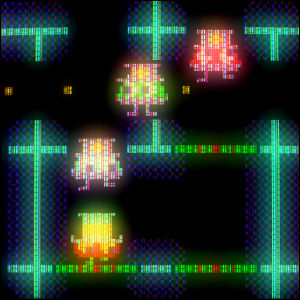 Data East releases the arcade video game Lock ‘n’ Chase in the United States. Though bearing some distinctive differences from Pac-Man, the game gets lost in a glut of Pac-Man knock-off coin-ops also in circulation.
Data East releases the arcade video game Lock ‘n’ Chase in the United States. Though bearing some distinctive differences from Pac-Man, the game gets lost in a glut of Pac-Man knock-off coin-ops also in circulation. ![]()
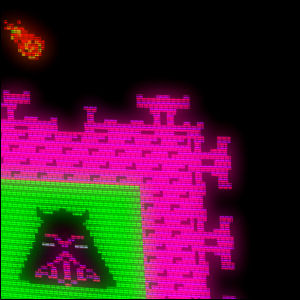 Atari releases the arcade video game Warlords, in both upright (for one or two players) and cocktail (up to four players) models.
Atari releases the arcade video game Warlords, in both upright (for one or two players) and cocktail (up to four players) models. ![]()
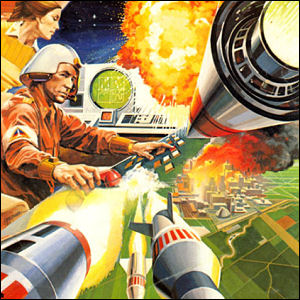 Atari releases the home version of Missile Command as a cartridge for the Atari 2600. The manual included with the game explains the missile attack as the product of an alien invasion, not Reagan-era Cold War tensions. Though the cartridge is an instant best-seller, its programmer receives a reward that convinces him to look for work somewhere other than Atari.
Atari releases the home version of Missile Command as a cartridge for the Atari 2600. The manual included with the game explains the missile attack as the product of an alien invasion, not Reagan-era Cold War tensions. Though the cartridge is an instant best-seller, its programmer receives a reward that convinces him to look for work somewhere other than Atari. ![]()
 Atari releases the arcade video game Red Baron, a vector graphics game of first-person biplane dogfights.
Atari releases the arcade video game Red Baron, a vector graphics game of first-person biplane dogfights. ![]()
 Atari releases the vector graphics arcade game Tempest, created by programmer Dave Theurer. This is the first game to use Atari’s “Quadrascan” vector display, capable of displaying a limited color palette instead of the strictly black & white graphics of the company’s previous vector games.
Atari releases the vector graphics arcade game Tempest, created by programmer Dave Theurer. This is the first game to use Atari’s “Quadrascan” vector display, capable of displaying a limited color palette instead of the strictly black & white graphics of the company’s previous vector games. ![]()
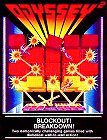 Magnavox releases the video game Blockout! / Breakdown! for the Odyssey² home video game system in North America, designed and programmed by Ed and Linda Averett. The game is released later in Europe for the equivalent Videopac console, and in France for the Jopac.
Magnavox releases the video game Blockout! / Breakdown! for the Odyssey² home video game system in North America, designed and programmed by Ed and Linda Averett. The game is released later in Europe for the equivalent Videopac console, and in France for the Jopac. ![]()
 Magnavox releases the video game Casino Slot Machine! for the Odyssey² home video game system in North America, designed and programmed by Ed and Linda Averett. The game is released later in Europe for the equivalent Videopac console, and in France for the Jopac.
Magnavox releases the video game Casino Slot Machine! for the Odyssey² home video game system in North America, designed and programmed by Ed and Linda Averett. The game is released later in Europe for the equivalent Videopac console, and in France for the Jopac. ![]()
 Magnavox releases the video game Pocket Billiards! for the Odyssey² home video game system in North America, designed and programmed by Ed and Linda Averett. The game is released later in Europe for the equivalent Videopac console, and in France for the Jopac.
Magnavox releases the video game Pocket Billiards! for the Odyssey² home video game system in North America, designed and programmed by Ed and Linda Averett. The game is released later in Europe for the equivalent Videopac console, and in France for the Jopac. ![]()
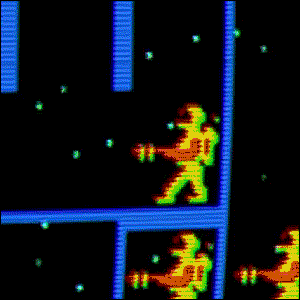 Midway releases the arcade video game Wizard Of Wor, a maze shooter for one or two players who can play cooperatively or against each other – though in many cases, a single game can start cooperatively and end competitively!
Midway releases the arcade video game Wizard Of Wor, a maze shooter for one or two players who can play cooperatively or against each other – though in many cases, a single game can start cooperatively and end competitively! ![]()
 Activision releases a trio of cartridges for the Atari VCS home video game system, including Larry Kaplan’s Kaboom! (featuring graphics by David Crane). Kaboom! proves to be the most popular of the three games released on this date.
Activision releases a trio of cartridges for the Atari VCS home video game system, including Larry Kaplan’s Kaboom! (featuring graphics by David Crane). Kaboom! proves to be the most popular of the three games released on this date. ![]()
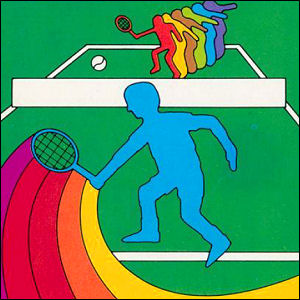 Activision releases a trio of cartridges for the Atari VCS home video game system, including Alan Miller’s Tennis.
Activision releases a trio of cartridges for the Atari VCS home video game system, including Alan Miller’s Tennis. ![]()
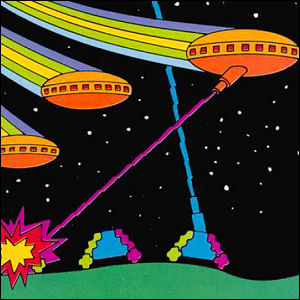 Activision releases a trio of cartridges for the Atari VCS home video game system, including David Crane’s Tennis.
Activision releases a trio of cartridges for the Atari VCS home video game system, including David Crane’s Tennis. ![]()
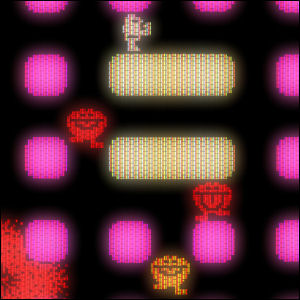 Better known for making jukeboxes and speakers, Rock-Ola dips its toes into the video game industry by releasing Warp Warp in the United States. The arcade game, originated in Japan by Namco, features cute, colorful characters in a maze setting, not entirely unlike Pac-Man, but fails to catch on in American arcades.
Better known for making jukeboxes and speakers, Rock-Ola dips its toes into the video game industry by releasing Warp Warp in the United States. The arcade game, originated in Japan by Namco, features cute, colorful characters in a maze setting, not entirely unlike Pac-Man, but fails to catch on in American arcades. ![]()
 Exidy’s swashbuckling coin-op video game Venture arrives in arcades, letting players control the actions of the bow-and-arrow-shooting treasure hunter, Winky. The game’s unique structure provides an early example of an “interactive graphical menu” letting players choose which treasure room to plunder next – but a choice has to be made quickly, in real time, because there are still monsters that can kill Winky on the menu screen.
Exidy’s swashbuckling coin-op video game Venture arrives in arcades, letting players control the actions of the bow-and-arrow-shooting treasure hunter, Winky. The game’s unique structure provides an early example of an “interactive graphical menu” letting players choose which treasure room to plunder next – but a choice has to be made quickly, in real time, because there are still monsters that can kill Winky on the menu screen. ![]()
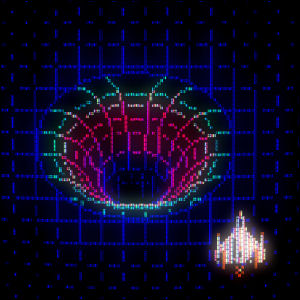 Sega releases the arcade game Space Odyssey in American arcades. With its depiction of Schwarzchild radius-style black holes scrolling under the player’s spaceship, this is among the first arcade video games with isometric 3-D graphics.
Sega releases the arcade game Space Odyssey in American arcades. With its depiction of Schwarzchild radius-style black holes scrolling under the player’s spaceship, this is among the first arcade video games with isometric 3-D graphics. ![]()
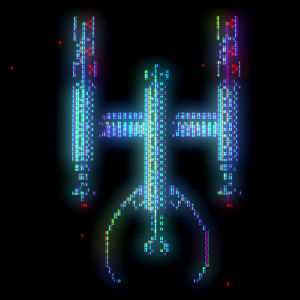 Sega introduces Astro Blaster to an arcade scene already awash in space shoot-’em-ups, but the game carves out a small niche for itself. Its greatest contribution, later on, may be in providing much of the inspiration for Activision’s home video game hit Megamania.
Sega introduces Astro Blaster to an arcade scene already awash in space shoot-’em-ups, but the game carves out a small niche for itself. Its greatest contribution, later on, may be in providing much of the inspiration for Activision’s home video game hit Megamania. ![]()
 Mattel Electronics releases the PBA Bowling cartridge for the Intellivision home video game system.
Mattel Electronics releases the PBA Bowling cartridge for the Intellivision home video game system. ![]()
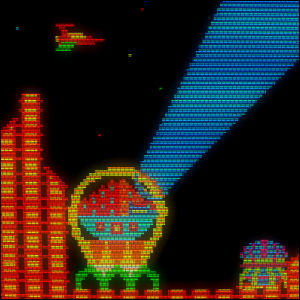 With game play similar to the coin-op hit Defender (but more detailed, colorful graphics), Universal introduces the minor arcade hit Cosmic Avenger in America. Though it never really sets earnings records, home video game rights are eventually snapped up by Coleco, which will offer a home version of Cosmic Avenger on its upcoming Colecovision console.
With game play similar to the coin-op hit Defender (but more detailed, colorful graphics), Universal introduces the minor arcade hit Cosmic Avenger in America. Though it never really sets earnings records, home video game rights are eventually snapped up by Coleco, which will offer a home version of Cosmic Avenger on its upcoming Colecovision console. ![]()
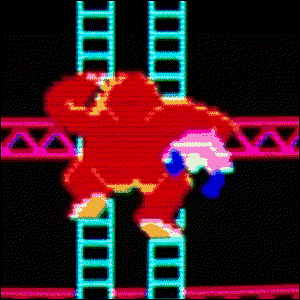 With one unprofitable flop behind it, the American branch of Nintendo has a lot riding on its second arcade game. Fortunately, it strikes gold with Donkey Kong, the coin-op which launches the careers of both Shigeru Miyamoto and a plumber named Mario (also referred to as “Jumpman”). Nintendo is now in America to stay.
With one unprofitable flop behind it, the American branch of Nintendo has a lot riding on its second arcade game. Fortunately, it strikes gold with Donkey Kong, the coin-op which launches the careers of both Shigeru Miyamoto and a plumber named Mario (also referred to as “Jumpman”). Nintendo is now in America to stay. ![]()
 Challenging players to fly their space fighter through an array of twisty mazes in an attempt to reach the final goal – destroying the “brain” of an enemy rocket – SNK’s Vanguard is released in American arcades. This is one of the first coin-op video games to present the player with an option upon running out of “lives”: allow the game to end, or insert another quarter or token to continue from the last position.
Challenging players to fly their space fighter through an array of twisty mazes in an attempt to reach the final goal – destroying the “brain” of an enemy rocket – SNK’s Vanguard is released in American arcades. This is one of the first coin-op video games to present the player with an option upon running out of “lives”: allow the game to end, or insert another quarter or token to continue from the last position. ![]()
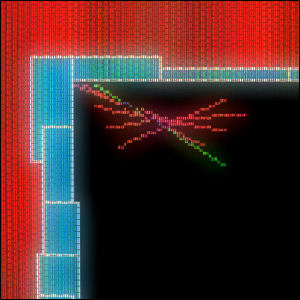 The first game generated by west coast programmers working for Taito’s new American game design division, Qix hits the arcades, reeling players in with its weird sound effects, abstract game play, and an enemy that anticipates the look of Windows screen savers years before either Windows or screen savers exist. Qix becomes an instant cult classic, though it proves to be nearly impossible to replicate with the current generation of home video game hardware.
The first game generated by west coast programmers working for Taito’s new American game design division, Qix hits the arcades, reeling players in with its weird sound effects, abstract game play, and an enemy that anticipates the look of Windows screen savers years before either Windows or screen savers exist. Qix becomes an instant cult classic, though it proves to be nearly impossible to replicate with the current generation of home video game hardware. ![]()
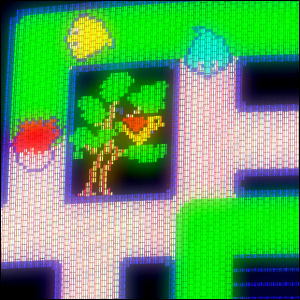 Not wanting to miss a piece of the Pac-Man pie, American pinball & video game manufacturer Williams Electronics releases Make Trax in Stateside arcades, one of the few Japanese-made games licensed by Williams for American release. Yet another maze chase game, Make Trax at least has the novelty of turning the player into a paintbrush trying to coat the entire maze with color.
Not wanting to miss a piece of the Pac-Man pie, American pinball & video game manufacturer Williams Electronics releases Make Trax in Stateside arcades, one of the few Japanese-made games licensed by Williams for American release. Yet another maze chase game, Make Trax at least has the novelty of turning the player into a paintbrush trying to coat the entire maze with color. ![]()
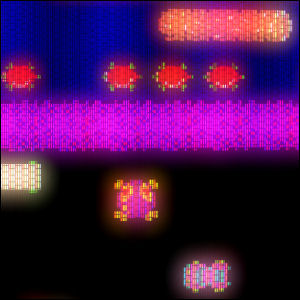 Created by Japanese video game manufacturer Konami (which has yet to establish a corporate foothold in North America), Frogger is introduced to the United States by Sega, and becomes an instant arcade hit whose cute graphics make it a natural for Pac-Man fans. In time, Frogger inspires a rock song, a cartoon, and numerous home video game cartridges.
Created by Japanese video game manufacturer Konami (which has yet to establish a corporate foothold in North America), Frogger is introduced to the United States by Sega, and becomes an instant arcade hit whose cute graphics make it a natural for Pac-Man fans. In time, Frogger inspires a rock song, a cartoon, and numerous home video game cartridges. ![]()
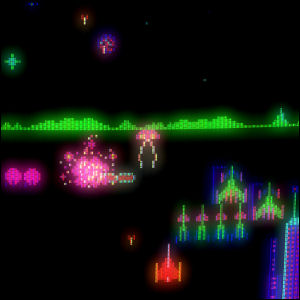 Centuri releases the arcade video game Pleiades (spelled correctly on the arcade cabinet, though the game identifies itself onscreen as “Pleiads”), licensed from Japanese company Tehkan International.
Centuri releases the arcade video game Pleiades (spelled correctly on the arcade cabinet, though the game identifies itself onscreen as “Pleiads”), licensed from Japanese company Tehkan International. ![]()
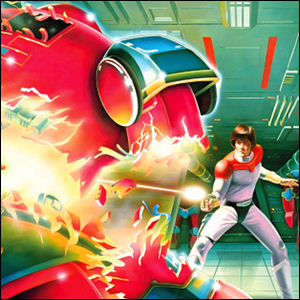 Atari releases the home version of the arcade hit Berzerk as a cartridge for the Atari VCS home video game system. Almost a dead ringer for the graphically simple arcade game, the console port is only missing the distinctive Cylon-esque voice synthesis of the coin-op. The second issue of the Atari Force comic from fellow Warner Communications subsidiary DC Comics is packed-in with Berzerk.
Atari releases the home version of the arcade hit Berzerk as a cartridge for the Atari VCS home video game system. Almost a dead ringer for the graphically simple arcade game, the console port is only missing the distinctive Cylon-esque voice synthesis of the coin-op. The second issue of the Atari Force comic from fellow Warner Communications subsidiary DC Comics is packed-in with Berzerk. ![]()
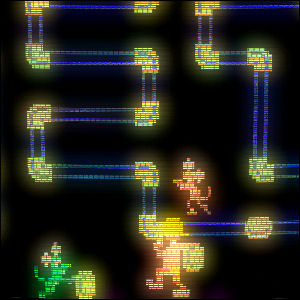 Nichibutsu releases the arcade video game Frisky Tom.
Nichibutsu releases the arcade video game Frisky Tom. ![]()
 Mattel Electronics releases the Snafu cartridge for the Intellivision home video game system.
Mattel Electronics releases the Snafu cartridge for the Intellivision home video game system. ![]()
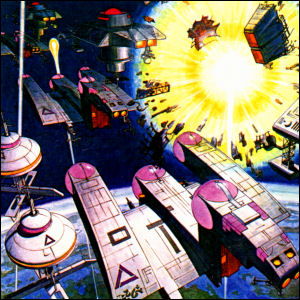 Mattel Electronics releases the Space Armada cartridge for the Intellivision home video game system.
Mattel Electronics releases the Space Armada cartridge for the Intellivision home video game system. ![]()